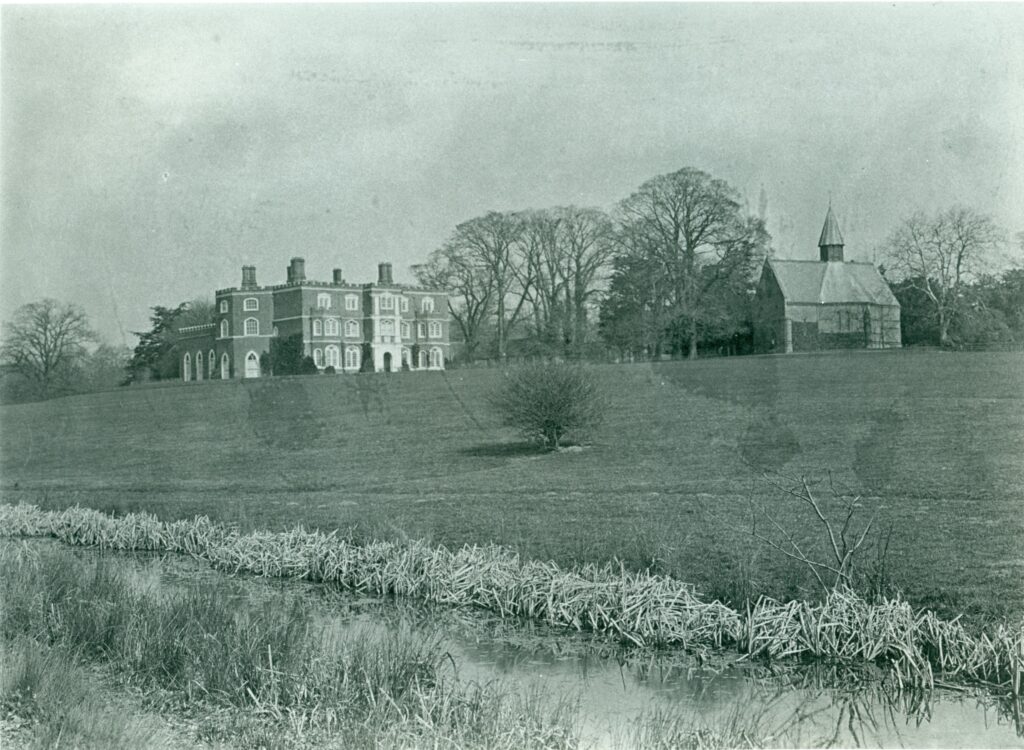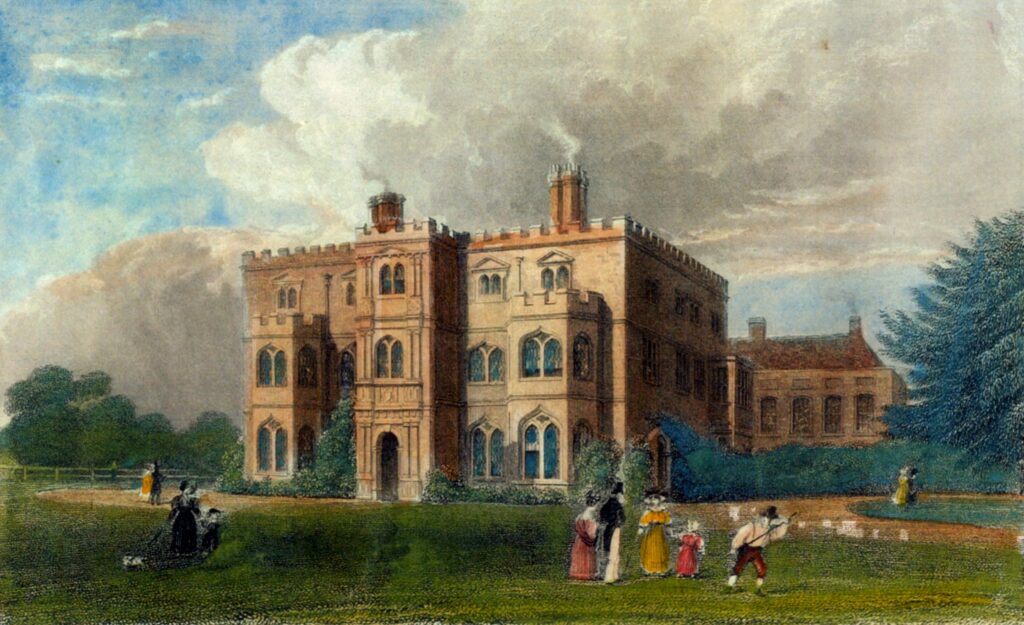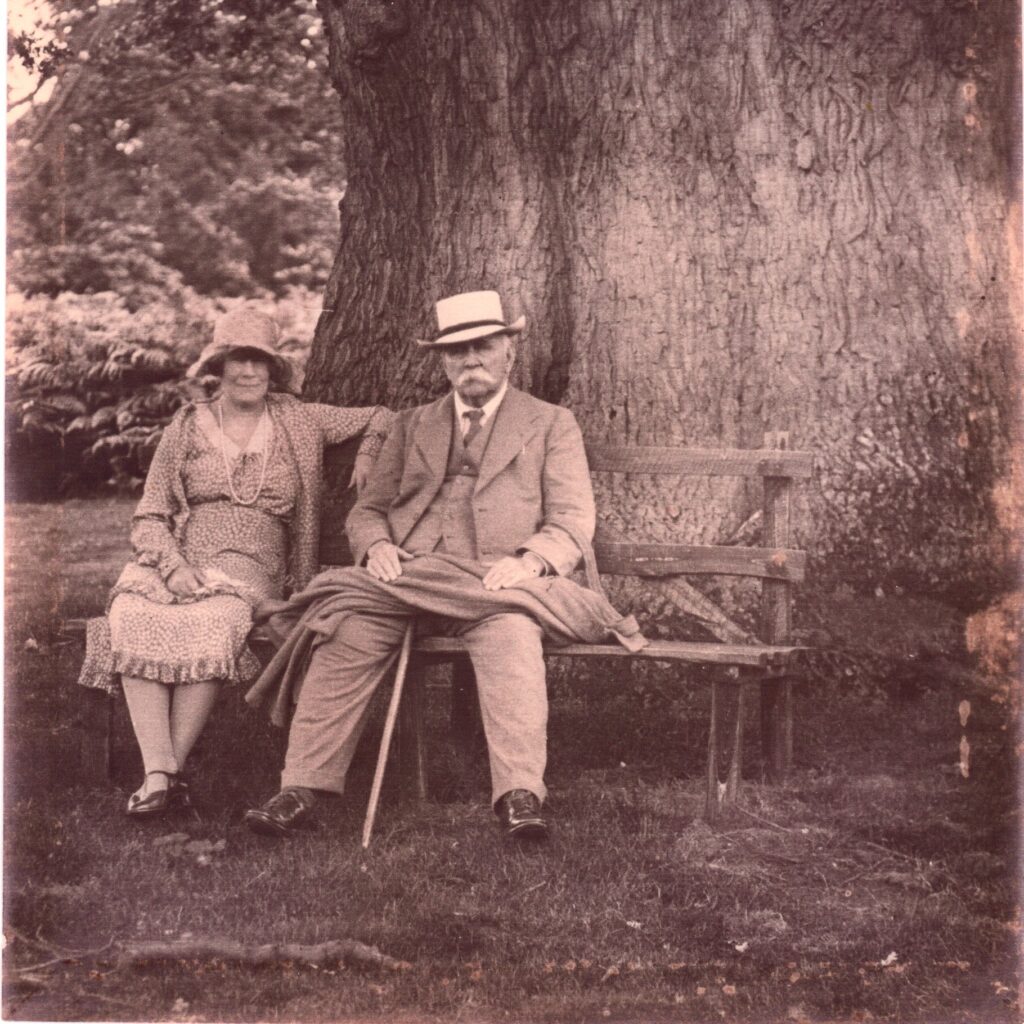About us
Our story
Markshall Estate, a home for people and nature for 1,000 years
Markshall Estate, a home for people and nature for 1,000 years

Listed as ‘Mercheshala’ in the Domesday book in 1086, Markshall Estate as we know it today was once part of a bigger manor. Hugh de Montfort, Earl of Essex had been granted the land prior to this date, and he installed the de Merc family as tenants. In 1163, the land was officially granted to the de Merc family who, by then, had adopted the name of their property, ‘Merkshall’, and they stayed for over four hundred years.
The Merkshalls sold up in 1562, and the manor changed hands again in 1581. Archaeological digs have revealed evidence of a medieval house and Hedinghamware pottery from this era, which is an indicator of wealth. In 1605, Robert Honywood of Kent purchased the property, recorded at this time as ‘Markshall’, and built a large Jacobean style Mansion House on the site of the Tudor house, which was subsequently named ‘Marks Hall’. The land continued to be recorded as ‘Markshall Park’ on maps and official records, in the parish of Markshall.
The Honywoods stayed until 1897, when Thomas Phillips Price, an MP from Wales, purchased the land and house at auction.

For most of its 1,000 years of life, Markshall was much like any other British estate. Owned by a single family and operated principally for the benefit of the owner, its economy centred on maintaining the estate and providing a pleasant home and focus for entertainment. Estates like Markshall were also key local employers, as well as the landlords for farmers and other tenants.
When Thomas Phillips Price, the estate’s last private owner, took possession in the late nineteenth century, social conditions were changing, and these changes affected estates like Markshall. A depression in global agriculture, the professionalisation of government and changing attitudes to taxation all combined to make landed estates less appealing and often less profitable.

Thomas Phillips Price, a wealthy MP who had inherited mining interests in Wales, was in touch with changing attitudes to land use, and the increasing concern for the environmental impact of industry. In early correspondence with the then director of the Royal Botanic Gardens, Kew, Thomas Phillips Price proposed that the Marks Hall Estate (as it was then known) might make a suitable satellite location for parts of Kew’s collections threatened by London pollution.
Ultimately Wakehurst was chosen and is now home to the millennium seed collection, but the relationship with Kew was established. In his will of 1927, Phillips Price decreed that if he should die without an heir, Markshall would be held in trust for the nation, and the director of Kew should be Chair of the Trustees. He further expressed his desire that the purpose of the Trust was to use the Estate for the advancement of agriculture, arboriculture and forestry.

Thomas Phillips Price died in 1932, leaving a life interest in the property for his wife Mary. After her death in 1966, a Trust was established to fulfil his aims for the estate. Unfortunately, his expectation that the Estate might be self-financing was optimistic. Like many other smaller estates in that period, it was at best a break-even operation, with little scope for advancement.
After her husband’s death, Mary Phillips Price made a number of decisions which would radically affect the future of the Markshall Estate.

In the early 1940s, the Air Ministry requisitioned the mansion house and land to the north of the estate for the construction of the Earls Colne Airfield. The old deer park (now the Arboretum) was also requisitioned to serve as a base for fighter and bomber squadrons of the RAF and USAF.
Military buildings and installations were constructed and the Estate was peppered with prefabricated units providing shelter for 3,000 personnel. A network of concrete roads, some of which are still visible, connected Nissen huts, air-raid shelters, a hospital, workshops and the mansion house, which was adapted to serve as an Area Headquarters.
While the estate struggled on through two world wars, it had lost its momentum, its purpose, and finally its mansion house and chapel. The house, stripped of its contents and further damage by squatters, was demolished in 1950.

After the Second World War, Mary Phillips Price made a deal with the Forestry Commission, agreeing a 1,000-year lease of large areas of the estate for the growth of commercial timber.
Many of Thomas Phillips Price’s beloved ancient oaks, which he had specifically specified in his will should remain, were felled to clear the way for forest land. Sadly, the felling of ancient trees was commonplace on estates across the UK by this time, as land had lost much of its value and families sold up, unwilling to be burdened with estates that increasingly dwindled in value.
The Charity has since renegotiated the contracts with the Forestry Commission , and the last felling of commercial woodland will take place in the next two years.
Find out our plans to make Markshall Estate play a stronger role in the advancement of knowledge and conservation of the natural environment whilst providing you with a wonderful experience.
What’s next